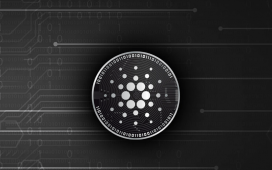Inflation has come down substantially. Gas prices are way down from their peak of $5 a gallon. As a recent White House report points out, grocery prices, which soared last year, are currently falling, and may well fall further in the months ahead:
And all of this has happened without a large rise in unemployment. But how far will “immaculate disinflation” go? Will it get us all the way back to the Federal Reserve’s target of 2 percent inflation?
Don’t ask economists. Or, to be more precise, don’t ask us unless you’re willing to wade into a highly tendentious debate. My inbox is filled with confident pronouncements that inflation will soon fade away and equally confident pronouncements that getting back to 2 percent will require a recession and a period of much higher unemployment. My own view? I don’t know. But I am worried that we’ve seen the easy part — and that getting inflation down from 3 to 2 might be a lot harder than getting it down from 10 to 3.
Which raises the question: Why is 2 percent the target anyway? The history of 2 percent is actually quite strange, and there’s a pretty good case for a higher target.
Inflation targets are a relatively recent development; the first central bank to introduce a target was the Reserve Bank of New Zealand, which sets monetary policy for five million people and 25 million sheep. In 1990 the bank set an inflation target of 1 percent to 3 percent, which was gradually emulated by many other countries.
But blaming New Zealand, while funny, isn’t really the story. What mostly happened was that in the 1990s a 2 percent inflation target seemed to simultaneously address the concerns of two opposed policy factions.
On one side were economists who believed that the essential role of monetary policy — maybe even its moral duty — was to deliver stable prices. Money, after all, is a yardstick we use to measure economic activity, and they argued that this yardstick shouldn’t be constantly changing its length.
On the other side were economists who worried that too low an inflation rate could inhibit our ability to fight recessions. The Federal Reserve and its counterparts in other countries try to manage the economy mainly through their control of short-term interest rates; but these rates can’t go much below zero, because negative rates would just lead people to accumulate stacks of $100 bills. A higher rate of inflation tends, other things being equal, to raise interest rates and makes it less likely that the Fed, faced with a recession, will hit the “zero lower bound” and be unable to cut rates further.
That’s a real conflict of views. By the late 1990s, however, it seemed as if 2 percent inflation would satisfy both sides.
Many economists who believed in stable prices also believed that official price statistics were overstating inflation by, among other things, failing to give full credit to the benefits created by the introduction of new products. For example, the Boskin Commission, appointed by the Senate to review cost-of-living adjustments for Social Security, argued that “true” inflation was more than a percentage point below the official Consumer Price Index. If you accepted such estimates, you could argue that 2 percent official inflation was actually close to stable prices.
At the same time, economists who worried about recession-fighting believed that a 2 percent inflation target would be high enough to largely eliminate the zero lower bound problem. An influential 2000 paper by David Reifschneider and John Williams (now the president of the New York Fed) estimated the probability of hitting the zero lower bound at different inflation rates:
Based on the available data at the time, they thought 2 percent inflation would basically make the issue go away.
But they were wrong. We have, in fact, spent a large fraction of the time since that paper was published at the zero lower bound, even though inflation has in fact averaged around two percent:
True, interest rates are high right now as the Fed fights inflation, but we can’t count on that continuing. So a key pillar of support for the 2 percent rule has vanished. And a decade ago, quite a few economists — including me — were calling for raising the target, perhaps to 4 percent.
Central bankers hate that idea — I’ve been in rooms full of men in gray suits when someone broaches the possibility of a higher inflation target, and the reactions aren’t pretty. But the main concern seems to involve the perception that the bankers would lose credibility; is that a good enough reason to impose high unemployment, if that turns out to be necessary to get inflation back to 2 percent?
Now, my own views on this have evolved a bit. One of the good aspects of the recent bout of inflation is that the public’s expectations of medium-term inflation have remained more or less “anchored” — there’s been no sign of a 1970s-type wage-price spiral.
I don’t think this reflects the Fed’s credibility, because I don’t think many people in the real world outside the financial markets have a clear idea of what the Fed even is, let alone its inflation target. What it probably reflects, instead, is a long period during which inflation was low enough that people no longer felt the need to think about it at all. This lack of attention is a benefit in itself — one less source of mental stress — and also predisposed the public to treat a price surge as temporary, so that it didn’t get entrenched in wage- and price-setting.
So there is, I now believe, a good case for an inflation target low enough that people basically stop talking about inflation. And one encouraging development recently has been a sharp decline in the prominence of inflation in our national conversation. Last October, according to Gallup, 20 percent of the public considered inflation our most important problem; by April, that number was down to 9 percent.
Or to take a new-fashioned metric, here’s the average number of searches for “inflation” on Google, smoothed by taking a 12-week moving average:
So people are thinking about inflation a lot less, and their interest will probably recede even further toward normal as grocery prices decrease.
The question is, how low does the inflation target have to be for the public to lose interest? I now worry that 4 percent may be a bit too high. But 3 percent almost surely isn’t.
In which case, should we be willing to pay a high price to get inflation down from 3 to 2? This isn’t a hypothetical question about a remote possibility. It may very well be exactly the question policymakers face a few months from now. Will the Fed put the economy through the wringer to achieve an inflation target that we now know was based on old simulations that turned out to be wrong?









